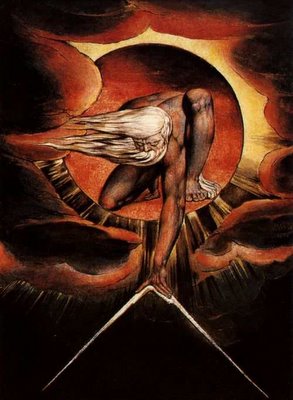
Ok so here should be the print. If not i'll try again.

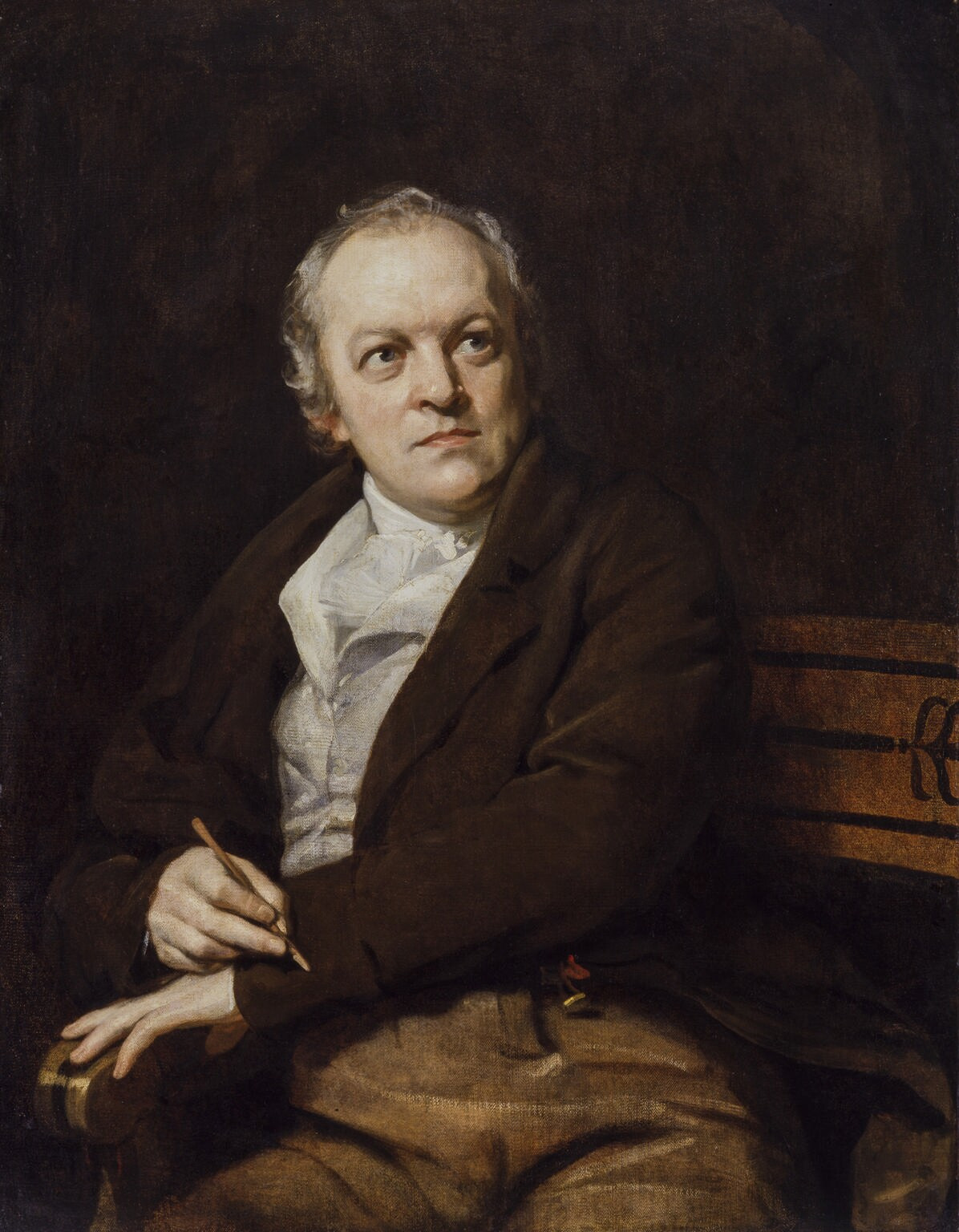
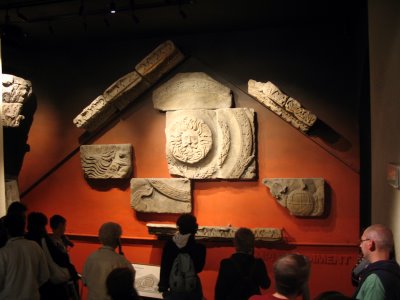 Today's art is from England and Paris. In England we went to the Salsbury Cathedral and Bathe. In Paris we went to the Louvre, Notre Dame and the Arc de Triomphe. Here are some photos of the works of art I saw at each place.
Today's art is from England and Paris. In England we went to the Salsbury Cathedral and Bathe. In Paris we went to the Louvre, Notre Dame and the Arc de Triomphe. Here are some photos of the works of art I saw at each place.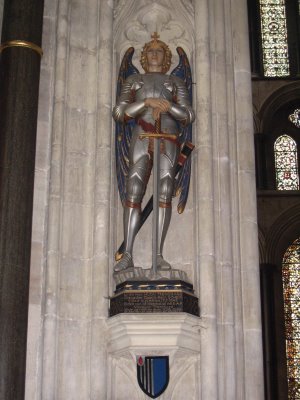 This was placed above a tomb in Salsbury Cathedral. I believe this to be religious instead of death and morbidity because the statue is of an angel. The epitaph reads, "His lot was with the dawn of life to die with the dawn of victory."
This was placed above a tomb in Salsbury Cathedral. I believe this to be religious instead of death and morbidity because the statue is of an angel. The epitaph reads, "His lot was with the dawn of life to die with the dawn of victory."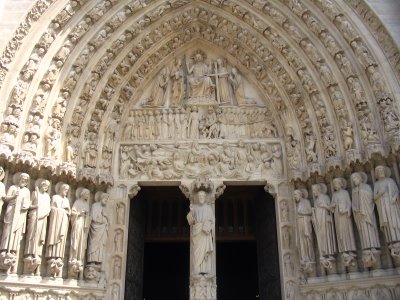 Here we see the entrance to Notre Dame. Very religious depictions carved all over the place here. This shows Jesus, his 12 apostles and then all the angels, saints and other names in Christianity.
Here we see the entrance to Notre Dame. Very religious depictions carved all over the place here. This shows Jesus, his 12 apostles and then all the angels, saints and other names in Christianity. 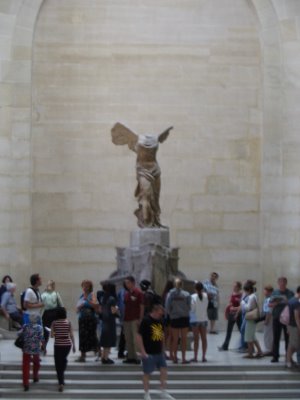
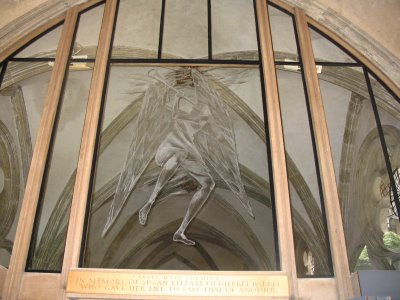 Here is a stain glass peice from Salsburry Cathedral in England. This was home to many tombs of noblemen and women. As one might be able to guess, there were many paintings, sculptures and other forms of art. Many by long forgotten artists.
Here is a stain glass peice from Salsburry Cathedral in England. This was home to many tombs of noblemen and women. As one might be able to guess, there were many paintings, sculptures and other forms of art. Many by long forgotten artists. 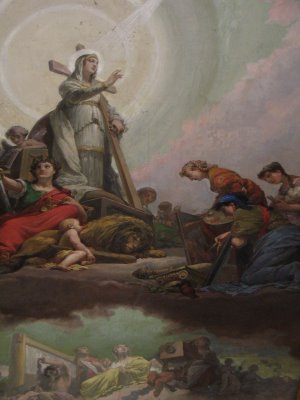
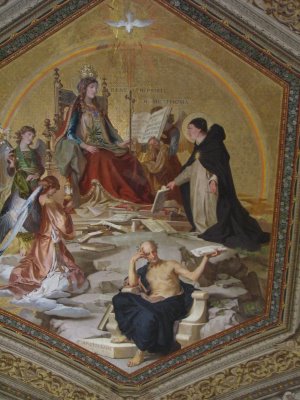
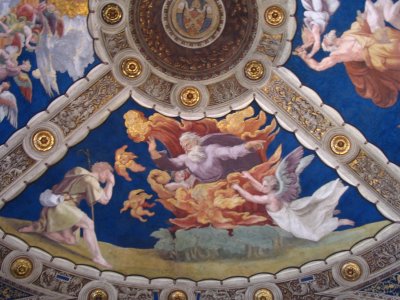
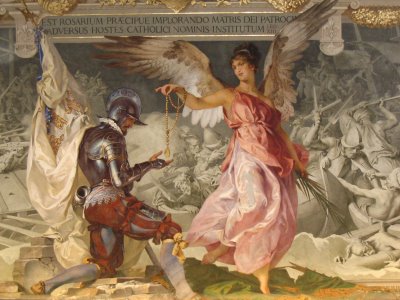 These last photos of paintings were taking in the building surrounding the Sistin Chapel known as the Vatican museum. Some were done by Michelangelo while others were done by other artists commissioned to enternilze some different scene described in the bible.
These last photos of paintings were taking in the building surrounding the Sistin Chapel known as the Vatican museum. Some were done by Michelangelo while others were done by other artists commissioned to enternilze some different scene described in the bible. 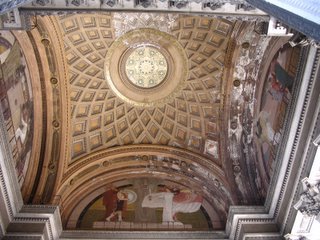 This picture was taken in the Roman Government building.
This picture was taken in the Roman Government building.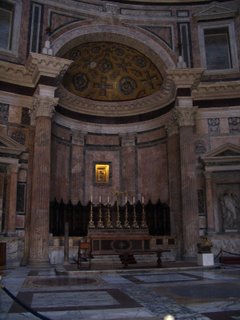 Here we see the Roman Pantheon. This was a religious temple for the Roman empire.
Here we see the Roman Pantheon. This was a religious temple for the Roman empire.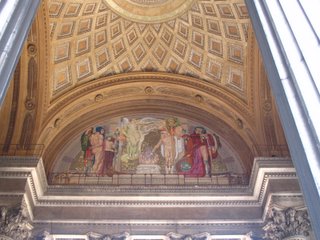 Another picture from the Roman Government building.
Another picture from the Roman Government building.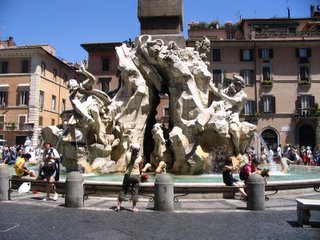 A fountain on one of Rome's main streets. If you have ever read Angels and Demons this fountain or one very similar to this was discussed. This fountain depicts some of Rome's gods.
A fountain on one of Rome's main streets. If you have ever read Angels and Demons this fountain or one very similar to this was discussed. This fountain depicts some of Rome's gods.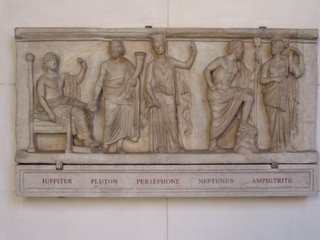 Here is a sculpture of Rome's High gods and goddess' before the coming of Catholicism. These names are similar to the Greeks High gods and goddess'
Here is a sculpture of Rome's High gods and goddess' before the coming of Catholicism. These names are similar to the Greeks High gods and goddess'